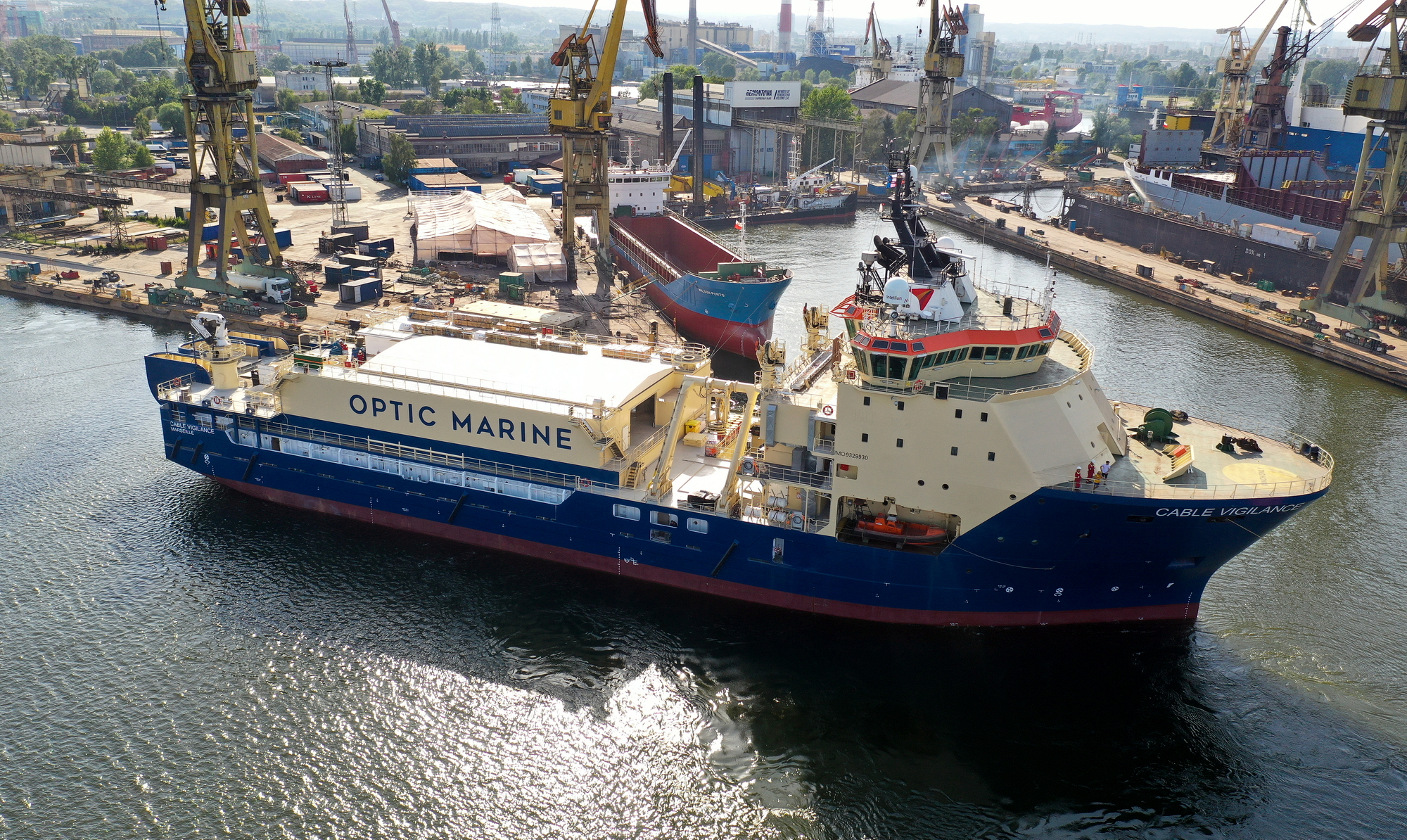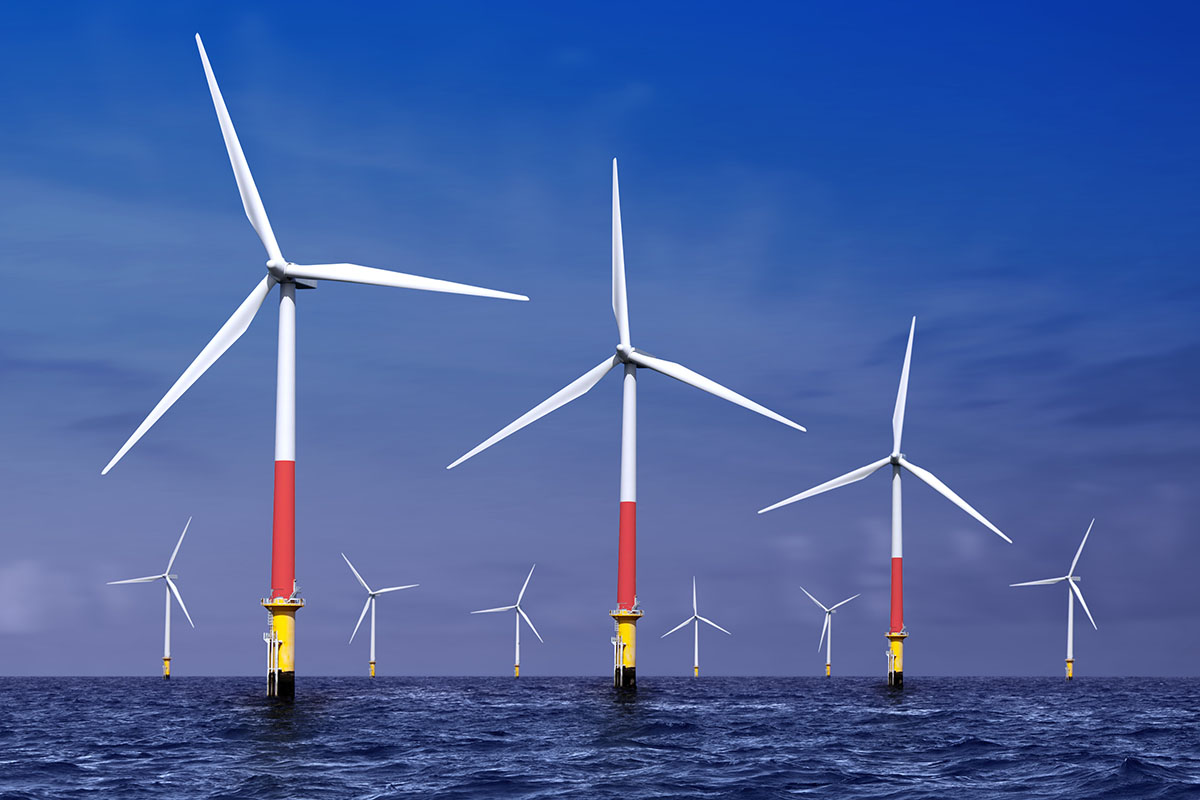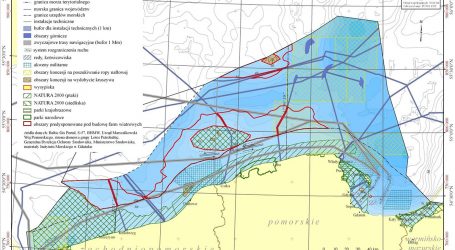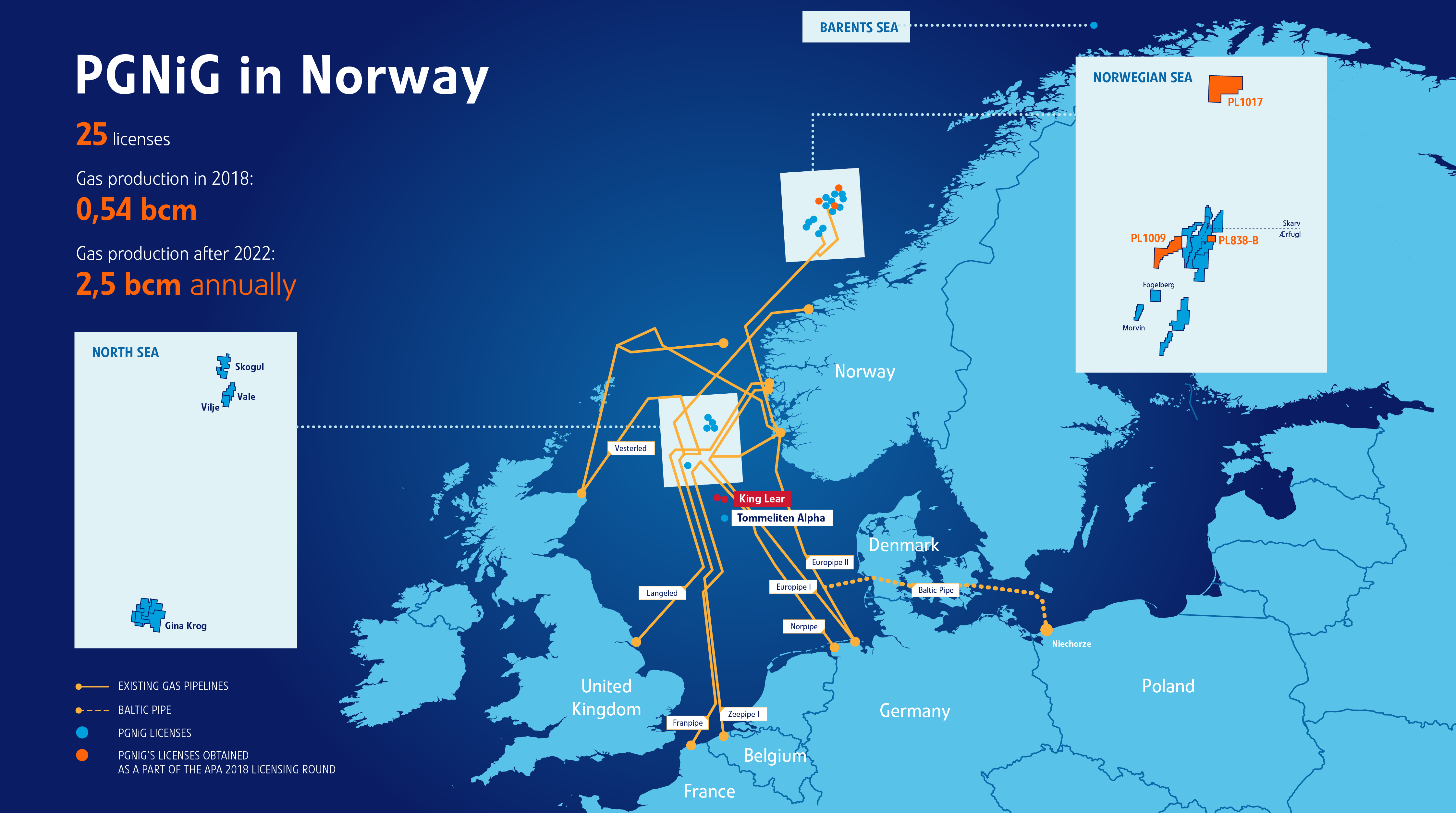Two sections of the SheFa-2 fibre-optic submarine cable – south and northwest of Shetland – were damaged in just one week. A cable ship converted to new functions by Remontowa Shiprepair Yard (Remontowa) in Poland, on the order of Louis Dreyfus Armateurs, was deployed to repair it.
Damage to two sections of the SheFa-2 cable that severely disrupted communications in the Shetland archipelago… “was probably caused by fishing vessels, and there is no indication that the failures were the result of intentional action,” – reported Faroese Telecom (Føroya Tele) on Friday, October 21.
Páll Vesturbú, head of Faroese Telecom’s infrastructure department, said that most telecommunications services had already been restored but announced that repairs to the previously damaged cable would be completed on Saturday and the one damaged on Thursday would be completed this week.
The October 20 damage to the cable connecting (via Orkney) the Shetland archipelago to the Scottish mainland caused a temporary communications blackout on the islands, including the interruption of landlines and cell phones (which also made it difficult or impossible to call emergency services). There was also no broadband internet access (although some sources said the services of internet provider Shetland Broadband were working), credit card terminals and ATMs.
Due to its small population, Shetland has a relatively poor communications infrastructure, so even the failure of a single wire can deprive it of connectivity to the world. The island’s economy is based mostly on fishing.
The Indonesian company Optic Marine Service was contracted to repair the SheFa-2 subsea communications cable with its Cable Vigilance vessel, which was converted to operate as a cable vessel by Remontowa in Gdansk, Poland, in 2022.
Media reports in Shetland had previously speculated that Cable Vigilance, working so far on the northern section of SheFa-2, some 33 Mm off Papa Stour, would be deployed immediately to the site of the second damage, south of South Ronaldsay Island, for repairs on the southern section of SheFa-2.
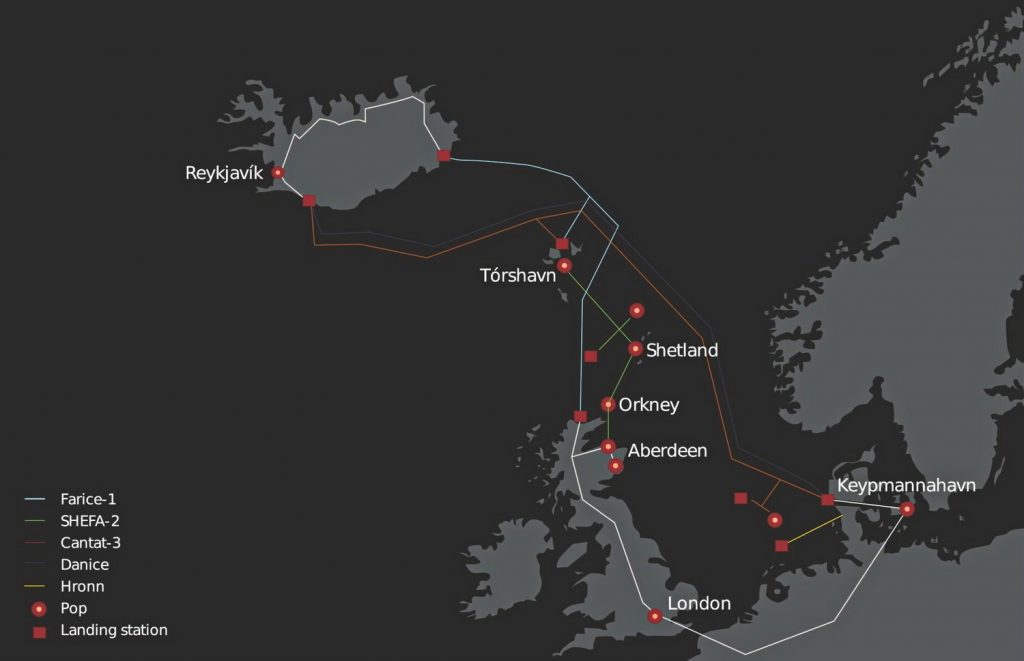
That, however, did not happen. Cable Vigilance worked in the area of the first damage until the night of Saturday-Sunday, October 22/23, and still left for a temporary base in the Faroe Islands during the night or early Sunday morning. She arrived in the port of Tórshavn on Sunday evening. Earlier this week, she was scheduled to depart for the area of damage in the southern section of SheFa-2.
On October 23, Marvin Smith of Shetland Telecom tweeted that once the SheFa-2 fault between Shetland and Faroe had been fixed, the cable ship was heading for Faroe to pick up more cable before returning to repair the cable between Shetland and the Mainland. The vessel was estimated to be on site Tuesday.
The damage to the southern part of the SheFa-2 system (the second on this section in a month) came less than a week after an earlier one that affected the northern part of the fibre optic cable.
The various sections of SheFa-2 run between Tórshavn in the Faroe Islands and Maywick in Shetland, from South Sandwick in Shetland to Ayre of Caira in Orkney, and from South Ronaldsay Island (across Manse Bay) in Orkney to Banff in Scotland. The recent damage occurred first on the former, the northern section (between the Faroe Islands and Shetland), and then on the central section, often referred to as the southern section (between Shetland and Orkney).
The repairs of the northern part of She-Fa 2, assisted by Cable Vigilance, have already partially restored Shetland’s connectivity via submarine fibre optics since Saturday, but by a circuitous route – not via Orkney to Scotland, but through the northern part of SheFa-2 to Tórshavn, and further via the Farice connection from the Faroe Islands, to Caithness in Scotland. BT (British Telecom) mobile transceiver stations with satellite dishes were also used, which made a “workaround” for the damaged cable, restoring most communications as early as Thursday evening, October 20.
British Telecom once had its fleet of cable ships but has been outsourcing for years, as has the smaller and younger operator Faroese Telecom, which never had its ships. This trend has recently emerged for most national communications operators, which once had their cable ships.
Most intercontinental telephone and Internet communications are carried out via submarine fibre-optic links.
Energy interconnectors – increasingly longer and more efficient cables that deliver electricity – continue to gain importance in helping to improve energy security and supply balance and expand access to renewable energy in many countries.
Both subsea communication networks and major power transmission lines are growing worldwide. Still, in recent years, the largest growth rate has been in the power cable sector, laid on offshore wind farms between wind turbines (arrays) and land (export lines).
Hence the increased demand for cable-laying vessels, which, to reduce costs and shorten the wait for the possibility of putting them into service, are very often developed as converted vessels, which previously served other functions. However, the same is common for cable layers mobilised to install and maintain communication cables.
The Cable Vigilance arrived at Remontowa in February this year as a Platform Supply Vessel and left the shipyard in the second half of July after a major transformation into a high-tech, state-of-the-art vessel for laying and repairing fibre optic subsea cables. With the Cable Vigilance’s departure from Poland’s shipyard, another project, commissioned by French shipowner Louis Dreyfus Armateurs, ended.
Below is a Louis Dreyfuss Armateurs movie showing the Cable Vigilance conversion at Remontowa in Gdansk, Poland:
Also this year, Remontowa converted a twin PSV, the Ile de Molene, into an almost identical cable ship. The two projects have the same principle in common – French shipowner Louis Dreyfus Armateurs (LDA), which, on behalf of the two different companies, selected the Polish shipyard to carry out the conversion and, once completed, act as technical and crew manager for both vessels, also contributing its experience and know-how from operating several earlier cable ships.
LDA’s customers for fleet management services, and at the same time, the ultimate customers of Remontowa are – in the case of the first converted ship – the French company Alcatel Submarine Network, part of the Nokia group, and in the case of Cable Vigilance – the Malaysian company Optic Marine Service.
Both ships have undergone a complete metamorphosis at Remontowa. The former Platform Supply Vessels have been transformed into specialist ships to lay, repair and maintenance telecommunications cables on the seabed. Moreover, the vessels’ powerful performance and reliability deliver the best capability for installation and repair operations for the subsea cable industry.
Once converted, both vessels have become state-of-the-art cable-laying vessels as they were fitted with the latest generation of systems, equipment and facilities to tackle the most difficult challenges. On each vessel, the total weight of the new, prefabricated and installed structures exceeded 600 tonnes, and over 50 km of new cables were laid.
Remontowa built and mounted a 250-tonne structure, the so-called hangar, on each ship to house the specialist equipment necessary to carry out all the operations involved in handling the cables. The hangar comprises a new deck and new technical rooms located on several floors.
The Gdansk-based shipyard fitted each vessel with two stern sheaves operated by cable engines to lower or raise the cable from the ocean floor. The stern sheaves are distinguished by the accuracy of their craft and surface smoothness, achieved despite their impressive diameter size of 3 metres.
Together with the real attachment to the hull, this equipment weighs around 90 tonnes. The sheaves extend beyond the transom, lengthening the ship by several metres.
Two cable tanks have also been built on board. In addition, a new accommodation module, weighing over 80 tonnes, has been added between the hangar and the main superstructure. One floor, with cabins, is used for accommodation, while the remaining rooms are used for technical workshops, including the ROV control room.
A deck was added between the new accommodation module and the hangar to park the ROV. Retractable gantries were also installed on the vessels, creating the ROV’s Launch And Recovery System.
Remontowa has also rebuilt the superstructure. Several cabins were added, and double cabins were changed to single ones. The new refrigerated ship’s stores and gym have also been built in the new superstructure, which has four levels.
Virtually all work was carried out above the main deck. Below, the ships’ structure interventions mainly involved installing an HPR (Hydroacoustic Position Reference) system. In addition, Remontowa also installed the PFE (Power Feeding Equipment), an important safety system onboard.
source: PortalMorski.pl

